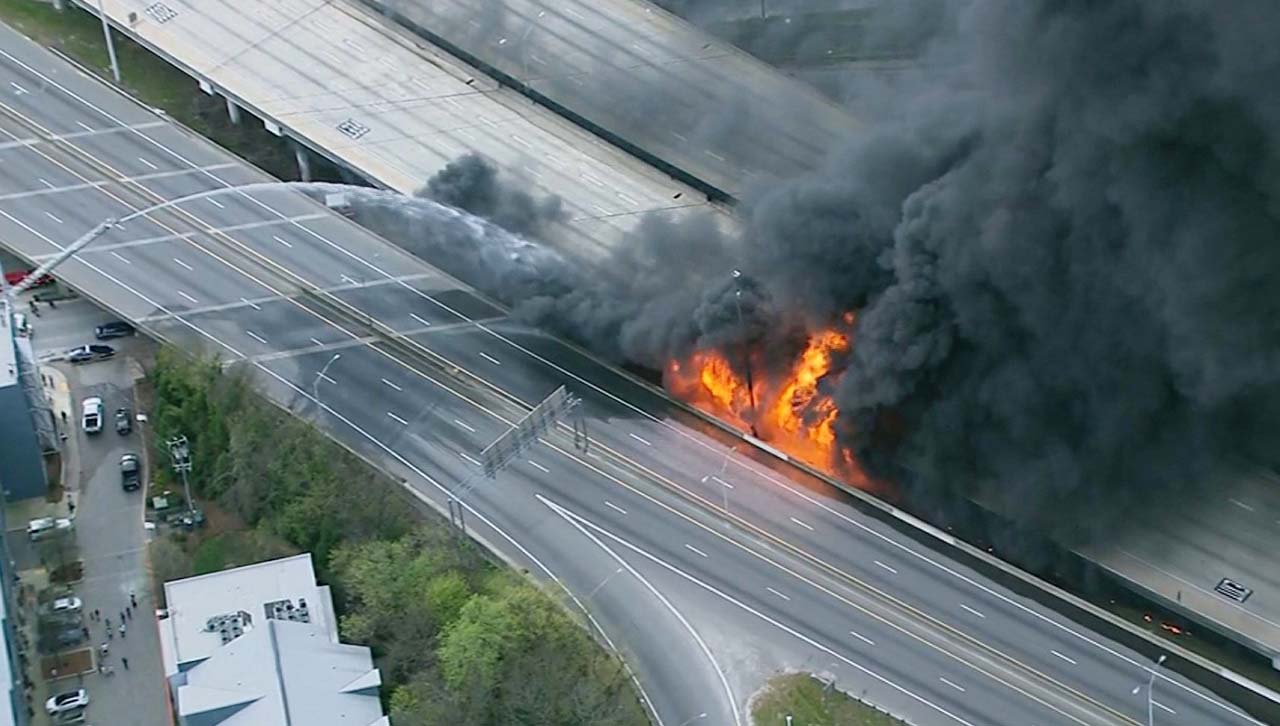The next time you walk down your driveway, take a look at all the cracks. Usually caused by water and growing plants, it can be unattractive to some. However, it can be fixed easily. What’s more surprising about the water damage however, scientists are just figuring out water in concrete can lead to it exploding. While it may sound far fetched, this is the truth. So in conclusion, there are two exciting new science facts. New solutions have made it possible to seal cracks and stop H20 corrosion, while that same natural earth resources can leak in and cause robust explosions.
Table of Contents
What makes it explode in Layman’s terms
According to PopularMechanics, it has been discovered how massive bridges like the one over Atlanta’s major highway, interstate 85, suffered major damage from fire. Researchers have found the water which is stuck inside the high-performance concrete evaporates, it also expands. Then after expanding and condensing, cracks can form and water may leak into other small open spaces where more water pockets may be found. Together, in the new space where only a fraction of the water existed before, it again expands and causes new ruptures. This process is where the danger begins.
If water is heated long enough time, like that of the Atlanta i-85 bridge fire, this process of water moving repeating can lead to a large explosion. Once enough liquid in one space and requires a large expansion, pressure busts the rock hard substance. The evaporated water will create enough PSI to blow the concrete out of its way. The chunks of rock tossed may even be thrown long distances, depending on the amount of H2O trapped inside.
This was not known before by scientists as all types of concrete were simply thought to be a non-flammable material, which is still true. Because of this truth, no one thought of the need to test or rationalize the idea of any version of the liquid rock becoming a dangerous explosive. Swiss and French scientists only did this recently after the rashes of high profile cases making the news, claiming concrete was burning.
High Performance vs Consumer Concrete
What was found by the group researching is a shocker for the world of construction and art. Ultra-high performance concrete, also known as UHPC, can explode in high temperatures. The lower quality and less durable forms of the liquid rock or typical consumer concrete has not exhibited this ability.
The reason for the difference between the two, consumer vs UHPC, is simply the level of cracking. Regular concrete is porous. It’s made of cement, sand, and water. The three substances together do not gel perfectly together. It has cracks and spaces throughout the body of the gelatinous substance when mixed and laid. This presents a problem for many who appreciate the aesthetics of a smooth, weed and bump free driveway.
High-performance concrete is very nonporous and does not break nor crack, not even from the erosion of water. It has additional ingredients beyond the regular form of concrete. It is not the same as what is poured in most driveways of consumer homes or projects. These added in chemicals make it dry fast and with solidifying with as few cracks as possible.
Ultra High Performance concrete a reactive powder concrete (RPC). It is usually a combination of portland cement, limestone and-or quartz flour, high range water reducers, supplementary cementitious materials, water, and reactive powders. Usually, the cement is bonded with super strong fibers like carbon, PVA, high carbon steel, or glass in the final stages of work. Its self-compacting as well, which means it packs into spaces as tight as possible, without application of extra force or steamrolling.
Resolutions for Consumer Concrete Cracks
The consumer or normal concrete mix of “CSW” (cement, sand, water) is sure to crack over time. While a decade ago, people were just told to repave there driveways and surfaces, there are new options as of 2019. Companies have developed professional grade sealers that can be applied to surfaces to seal cracks. Driveways, decorative concrete such as statues or borders, marble, pavers, and stamped concrete can all be covered in a sealant to create a new barrier of protection and smoothness.
Online, there are different types of seals. SealWithEase concrete sealer reviews is a great way to get valid opinions on some of the best brands. According to ‘SWE’ these new age concrete sealants fill in cracks, stop the leaking of water into foundations and walls, and leaves a glossy smooth surface cove. For driveways in colder climates that require salting, these sealants also prevent spalling and pitting of the concrete. Sealants can also increase the efficiency of air conditioning systems in brick homes where the sealant can be used to patch cracks on vertical structures.
Preventing Explosions
According to the Popular Mechanics article, this new information from Swiss and French scientists has been distributed across the world. Firefighters were at the top of the list to educate on such matters, followed by global cement companies. The group who researched and tested for these result has published a list of ingredients to add to Ultra-High Performance cement mixes that should lower the chances for future explosions, if not eliminate the risk altogether.
Within one year, most all UHPC mixes should be updated in the United States to prevent explosions and extreme fires. Now that this information has been released and results made public, people affected by such dangerous structures could create a new liability for many. If injured or killed, lawsuits against cities and companies could be filed every time an explosion happens.
Fire & Explosion Visuals
If not aware of the intense cement fire that burned down a bridge in the American city, Atlanta-Georgia, see the news report below. Video of the event was filmed by many bystanders traveling the popular interstate 85 highway daily. It took firefighters hours to contain and put out the fire. The famous cement fire is alleged to have been caused by a homeless man’s storage or home facility beneath the bridge.







